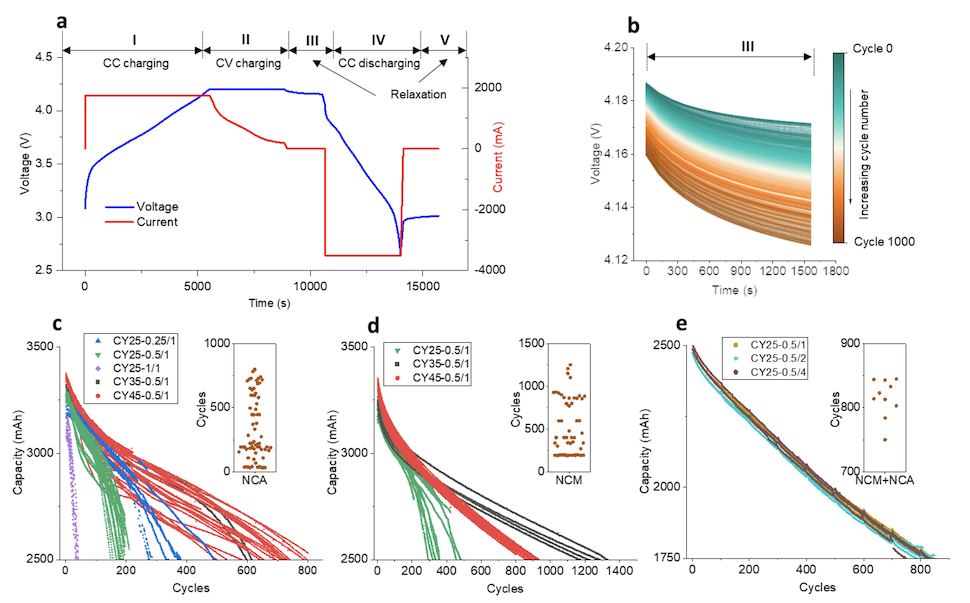Data-driven capacity estimation of commercial lithium-ion batteries from voltage relaxation
Nature Communications,
Jiangong Zhu, Yixiu Wang, Yuan Huang, R. Bhushan Gopaluni, Yankai Cao, Michael Heere, Martin J. Mühlbauer, Liuda Mereacre, Haifeng Dai, Xinhua Liu, Anatoliy Senyshyn, Xuezhe Wei, Michael Knapp, Helmut Ehrenberg
[PDF] [Code]

Click to enlarge image.
Abstract
Accurate capacity estimation is crucial for the reliable and safe operation of lithium-ion batteries. In particular, exploiting the relaxation voltage curve features could enable battery capacity estimation without additional cycling information. Here, we report the study of three datasets comprising 130 commercial lithium-ion cells cycled under various conditions to evaluate the capacity estimation approach. One dataset is collected for model building from batteries with LiNi(0.86)Co(0.11)Al(0.03)O2-based positive electrodes. The other two datasets, used for validation, are obtained from batteries with LiNi(0.83)Co(0.11)Mn(0.07)O2-based positive electrodes and batteries with the blend of Li(NiCoMn)O2 - Li(NiCoAl)O2 positive electrodes. Base models that use machine learning methods are employed to estimate the battery capacity using features derived from the relaxation voltage profiles. The best model achieves a root-mean-square error of 1.1% for the dataset used for the model building. A transfer learning model is then developed by adding a featured linear transformation to the base model. This extended model achieves a root-mean-square error of less than 1.7% on the datasets used for the model validation, indicating the successful applicability of the capacity estimation approach utilizing cell voltage relaxation.
Read or Download: PDF